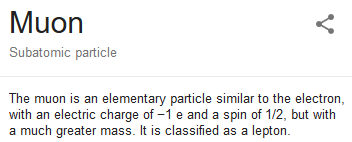
Presenting mATW = μCF Neutrons Accelerator Transmutation of Nuclear Waste


Neutrons emanating from a muon catalyzed fusion (μCF) beam line target can be collimated onto (perhaps a few layers of further neutron spallating materials and then on) suitably placed cannisters of nuclear waste, effecting a transmutation of the waste. This form of mATW requires the infrastructure of a muon beam generation system which is a particle accelerator that can be engineered on demand today deploying conventional pre-existing technology.
An unexpected bonus might arise in the fact that the vast majority of the μCF neutrons would pass right through the waste not disfiguring their energies, intensities or directions by collisions in the waste (due to the emptiness of the atom). These neutrons could still be used to generate energy in conventional nuclear energy-generation systems downsteam of the waste cannisters. Water in tanks behind the waste would still boil, creating steam, turning turbines, generating electricity. This in fact has always been part of the mATW concept for the very significant reason to offset & reduce the demanded input energy that generation of muons consumes. It is well known that the energy output of μCF does not exceed the energy input required to create muons, but energy generation exeeding breakeven is not the purpose of this μCF system; nuclear waste elimination is. Failing to exceed breakeven is not catastrophic. Instead, whatever energy is generated is still a bonus because it reduces the needed electrical energy to run all of the equipment in the first place.
Finally, just what would be unexpected about this bonus? In the building of this μCF energy generation system to sit behind the waste cannister, while reducing energy input demand of the system to do its deed, our engineering teams may well be creative, inventing & tinkering with the systems just to get them to work for the intended purpose, so much so that accidental discoveries might be made leading to actual success in exceeding breakeven for μCF. This would in turn practically realize nuclear fusion power in the now and near term offering it to the world decades before ITER comes online in 2050: a row boat defeating a battle ship as it were. (Design improvements for a μCF reactor are available upon request.)
The collimation system is unique to mATW is not possible in tATW though it might be possible for a proton accelerator form of sATW.
Initial contact was invited by the Ukrainian government for a letter of intent they could present to US State Dept officials meeting them in Kiev in October 2017 to discuss Chernobyl nuclear waste management issues. I wrote that letter cc'ing Ukraine and State of Maine government officials. In November 2017 I received responses from 2 Ukrainian agencies and the Kiev Institute of Nuclear Physics (KINP). These are available upon request. US Dept of Energy officials have been contacted as well, who provided the appropriate agency (NETL) through which to apply for funding to establish initial efforts for a new evaluation of mATW (since the last evaluation of ATW was 20+ years ago, and neither included tATW nor mATW). Ultimately there is a significant potential that contributions are possible internationally: Ukraine, Japan (my hosts to assist in drawing up required equipment lists for the new effort), France (due to their large waste stockpiles) and others.
As noted in a 2017 pitch deck (slide 4, bullet 4), the US government currently allocates $158B annually for cleanup of just Hanford and Savannah River when this is only for move & burial, not elimination. I propose that for 1% of that annual budget, $1.6B to mATW annually, the process can be started to eliminate the waste (globally) for good (bullet 5). As Hanford and Savannah River are only but two of many such sites, so the amounts to mATW annually can potentially be greater still.